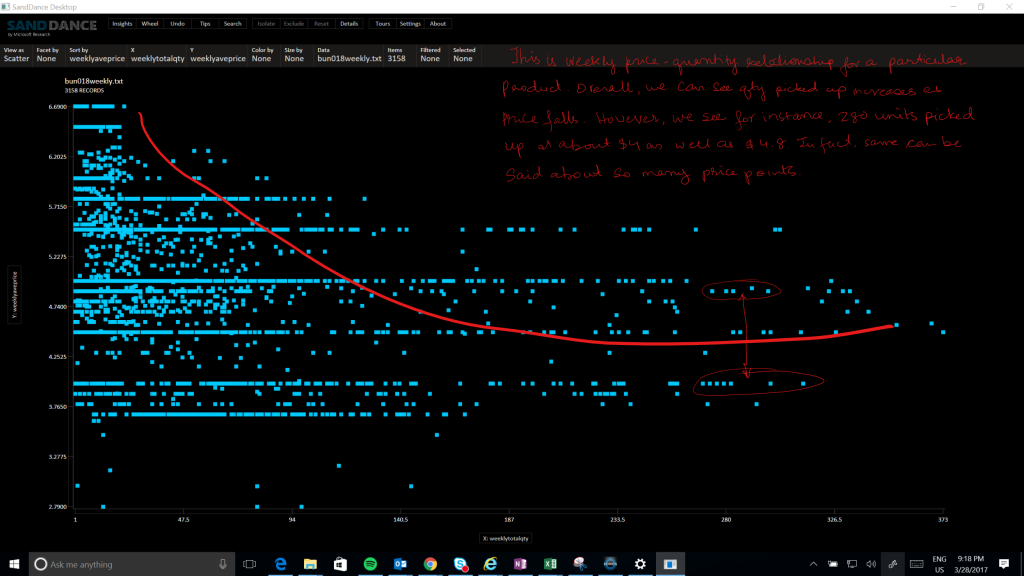Know your customer (KYC) - introduction to series
How do you make sense of sales data generated by transactions with 100,000 customers, 10000 products from 15 different sites through 10 different channels? It's easy, you say, because there are now so many tools available to do this and this is not even big data. But it's also hard because you don't need big data to be overwhelmed, even 1/100th of what we use in this example is enough to get the better of you. For most of us in any case. For instance, look at this data.
This is for a single product over three years. Average of weekly prices offered, and quantity picked up for just one product across the sites and channels. Even though we can see the expected price-quantity relationship, however, can we tell the customer what is a good price to offer? - to which customer? through which channel and site combination - in which weeks so the customer can be assured of maximizing returns? Moreover, this is only one product. How does one do this at scale?
So, that is our challenge. In addition to technical challenge, as we do customer projects we realize the need that project teams face on (1) how to get started with simple analysis when there are many possibilities, perspectives, KPIs etc. and (2) how to root the tools and analysis in the context of a business problem to build a compelling narrative which is what is critical for communication to executives. We try to address some of these issues in this series of posts. So, here we present you with an example - how to take your 'ordinary' 'sales data' from Dynamics 365 for operations sales order table and how to structure your exploration to provide some deeper analysis to your executives.
We present this in Q&A format so you can follow along with us.
We start with very basic questions that can be answered with simple descriptive analytics and don't need machine learning and then we progress towards deeper analysis. These series of posts are aimed at business analyst audience so we keep you away from technical complexity underneath. However, lets first see an approach that we use to solve this technical challenge.
